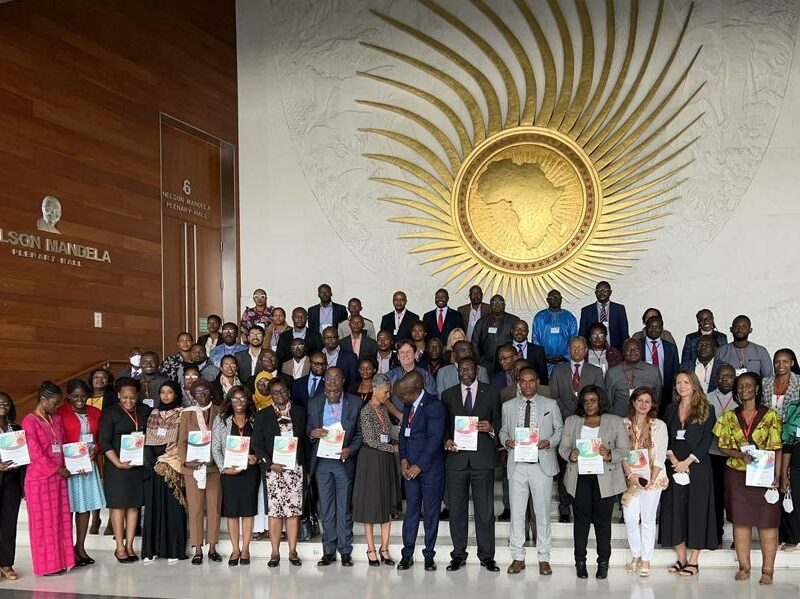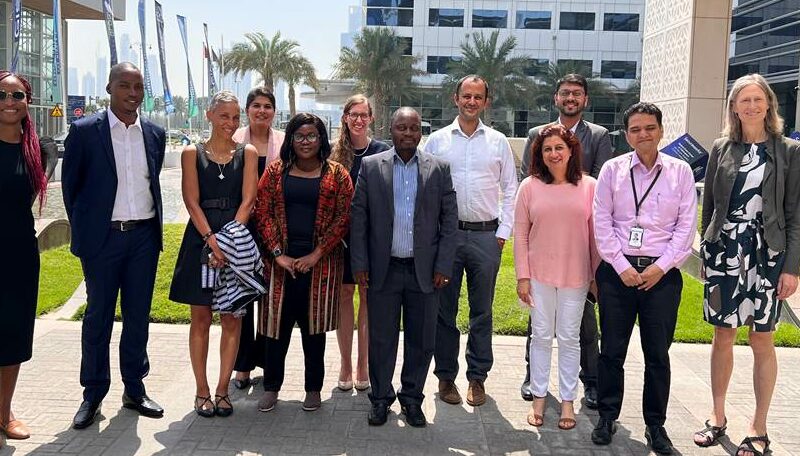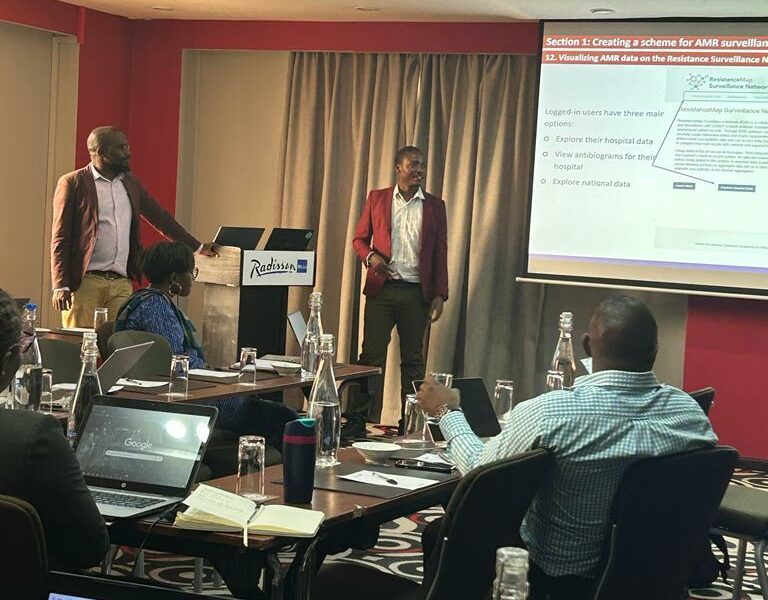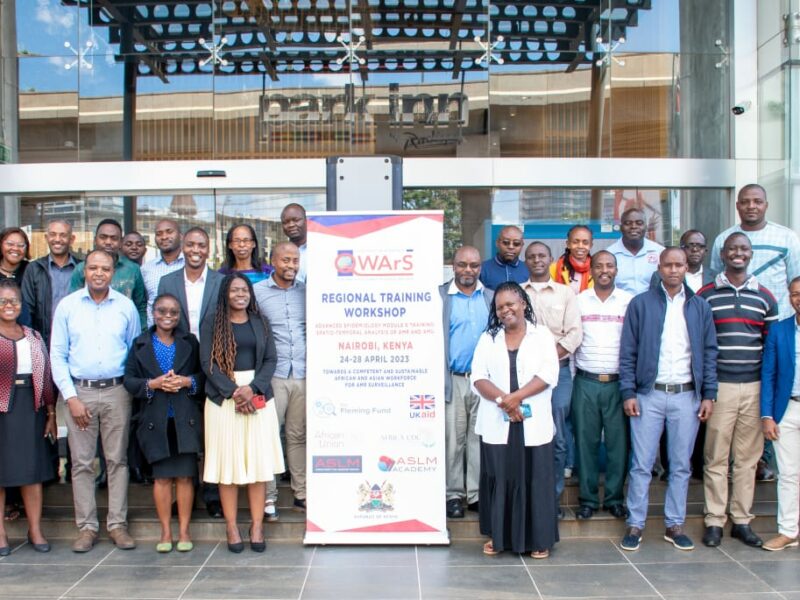November 23, 2023

Antimicrobial resistance (AMR) remains a global health crisis, especially in Africa where it causes 700,000 deaths every year. According to the World Health Organization, the death toll due to AMR could reach 4.1 million on the continent by 2050. Furthermore, as per a study published in The Lancet, western sub-Saharan Africa has the highest mortality rate from AMR across the globe, with nearly 27 deaths per 100,000 attributable to drug-resistant pathogens.
A major factor contributing to the spread of AMR on the continent is the misuse of antimicrobials. The absence of solid data on antimicrobial use and resistance, especially in countries in Africa that are being hit the hardest by resistant pathogens, does not allow for the timely and accurate detection of resistant infections. Moreover, without any baseline and credible information about the rates and drivers of AMR at the national and regional levels, interventions are often ineffective.
To better understand the extent of the AMR crisis across Africa and provide context-specific policy recommendations to address the issue, a multi-country study, funded by the UK Government’s Fleming Fund, was carried out by the Mapping Antimicrobial Resistance and Antimicrobial Use Partnership (MAAP) consortium. The consortium was spearheaded by the African Society for Laboratory Medicine (ASLM) with partners, including the One Health Trust (OHT); IQVIA; Africa Centres for Disease Control and Prevention (Africa CDC); West African Health Organization; the East Central & Southern Africa Health Community (ECSA-HC); and Innovative Support to Emergencies, Diseases, and Disasters (InSTEDD).
While ASLM, Africa CDC, WAHO, and ECSA were strategic partners, OHT and IQVIA were the technical experts on antimicrobial resistance and consumption, respectively. Our team worked to establish a system for laboratory selection and to estimate the prevalence and identify drivers of drug resistance. The results are intended to help policymakers develop action plans at institutional, national, and regional levels for mitigating the health and economic burden of AMR.
To learn more about this study and OHT’s role as the technical lead on AMR, Dr. Samantha (Sam) Serrano, OHT’s Associate Director of Science Communications, talked to Dr. Geetanjali Kapoor, the Director of OHT, India and the AMR focal point for the implementation of the Fleming Fund Regional Grant in Africa (the MAAP project).
Sam
How did OHT get involved in the MAAP project?
Geetanjali
We became involved in the project in 2017-2018 when the Fleming Fund released the proposal (for the project). OHT (known as CDDEP at that time) together with ASLM (lead grantee) and other partners, submitted a joint application as the MAAP consortium.
In December 2018, the MAAP consortium was selected for the implementation of the project in Africa. There were seven partners (including us), each with defined roles, and with OHT as the technical partner for AMR analysis. The project was officially launched with the first meeting held in Brighton, U.K. in February 2019.

Sam
How did you find laboratories in the different regions of Africa to participate in the project? What was the selection process like?
Geetanjali
To conduct the study, which was one of the first of its kind to be done in Africa on such a large scale, we had to come up with a structured methodology on data collection and analysis, as well as conduct a landscape assessment in each of the 14 countries to determine how many laboratories existed in these countries.
Our strategic partners along with the country representatives assisted us in conducting the landscape assessments. We also developed questionnaires to identify the eligibility of labs for inclusion as data collection sites.
Sam
Did the labs want to participate? Was it easy to get them to answer the questionnaire?
Geetanjali
Yes, the labs were cooperative. Moreover, our strategic partners, especially ASLM, ensured that we didn’t face any issue in getting responses from the labs. We also had to do a lot of back-and-forth communication with the labs to resolve queries or confirm certain answers.
Sam
How did you account for the linguistic differences between all the countries?
Geetanjali
We did not face any issues because of linguistic differences because most of these countries were English speaking. We also had a French speaking person on our team to facilitate discussions with the Francophone countries (Gabon and Cameroon).
Sam
Did the COVID-19 pandemic have any impact on the study and the analysis?
Geetanjali
COVID definitely had an impact on the data collection process as it was prolonged. Still, the data collectors managed to continue their work while adhering to all infection prevention control measures. The project was never stopped as every lab in every country in Africa remained operational during the pandemic.
Sam
What do you think were the most important conclusions out of this study?
Geetanjali
We were fortunate that we could address the main study objectives, including assessing the burden of AMR, the drivers of resistance, and the Drug Resistance Index (DRI). DRI is an indicator that provides an aggregate measurement of drug resistance and consumption. It is similar to the inflation index in the finance world, and was developed by OHT’s founder and president, Dr. Ramanan Laxminarayan. The results showed that AMR is rapidly spreading in the selected countries, with certain populations more prone to acquiring drug-resistant infections.
Of course, there were challenges. For example, a lack of digitized lab records made data collection challenging, and at times, the data collected was also incomplete. The data came from labs with varying capacities, and this had to be taken into account during analysis.
The study has built a base on which future studies can be conducted and we have also put forth recommendations that can help circumvent challenges we faced.
Sam
Do you think that this study will be replicated and even done better in the future?
Geetanjali
Yes, because we have the methodologies in place. That methodology will be very helpful. It has been distributed to all the countries. Every country has access to the data that they gave us. They can always continue to collect and analyze the data independently.
Post completion of the study, OHT researchers also conducted capacity building of epidemiologists on ‘spatio-temporal analysis of AMR’, as a part of the QWArS (Qualifying the workforce for AMR surveillance in Africa and Asia) program. We will continue to support ASLM and our stakeholders, such that our efforts can be further amplified across the countries and regions.

Sam
So OHT provided training to continue this type of AMR surveillance in the countries that participated in the study?
Geetanjali
Yes, OHT has provided the training for capacity building of epidemiologists in Africa. We didn’t want our efforts to go to waste. Whatever we do should be a platform for further advancements and future AMR surveillance. So, all this information that we have built up — the methodology, the foundation we laid, the challenges we faced, and the recommendations we produced — we shared all this with the countries through the country reports.

Sam
Do you think that this work with MAAP could impact microbiology labs in Africa in the future, the way things are run, the way things are, how they’re funded? Do you think it could have any impact on the number of microbiology labs?
Geetanjali
Yes, because one of the observations was that there were not enough labs in the country, which denoted poor access to healthcare. This means if there is no lab near a patient’s house or in the hospital where they have gone to consult, diagnosis can be delayed. This is an important finding, and we definitely need to increase the number of labs available for testing and surveillance.
Additionally, where standards of testing for AMR were not being met, data gathered could be used for analysis. Thus, to collect more reliable data in the future, we recommended ways to improved the overall quality of labs.
I believe that there is a lot of capacity building which needs to happen. And the labs need to seek accreditation in their country and comply with acceptable testing standards. There has to be some kind of a system in place. We need more labs, we need to have a better infrastructure for a patient to be able to reach the healthcare facilities, to get diagnosed on time, and to get treated on time.
Another big challenge was the lack of digitized records. It takes a lot of time and effort to analyze paper-based records. And the papers just keep lying on the shelves for years. So, digitization of hospital records is important to simplify surveillance.
Sam
And it’s hard to influence change with policymakers without data, right?
Geetanjali
Absolutely. We need to have the evidence to guide action. The evidence will help policymakers take note of the AMR crisis and adopt necessary measures such as developing improved infection prevention protocols, regulating the sales of antimicrobials, investing more in drug discovery and development, organizing stewardship in hospitals, conducting training capacity programs, and strengthening surveillance systems.
Sam
Thank you for taking the time to talk about OHT’s work on the MAAP project and the capacity building getting done to improve AMR surveillance in the region.
Geetanjali
My pleasure.
To find out more about the MAAP Project and other research projects OHT is participating in or leading in Africa, go here.











